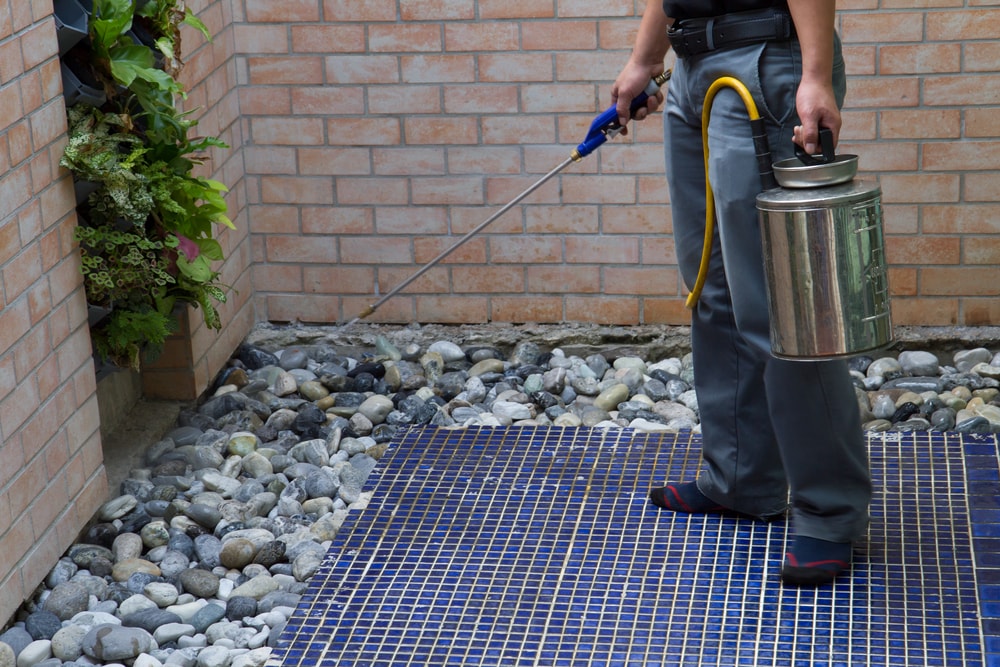I’m sure it’s safe to say that utilizing correct SEO strategies is critical for any online business to have real success.
We can also agree that digging through the trenches of the internet to find what works in SEO can be a nightmare. Even worse, especially if you’re starting out with your online business, you may be using tactics that are either obsolete or may get you permanently banned by Google, and you may not know it until it’s too late.
Rest assured, this article will help you make sure that you are using not only the most timely strategies for this year, but you will also learn evergreen content strategies that will make your visitors fall in love with your content and come back to you time and time again.
We will be taking an in-depth look at what it takes to build a winning SEO strategy in 2018 and beyond.
We will be going over everything you will need to know to start your SEO journey on the right foot, from the basics that you need to track your SEO efforts from day 1, to finding your best target keywords, to getting high-quality backlinks that signal to Google that your site is worth paying attention to.
Let’s kick things off by diving into the basics.
Going Back To School – Understanding the Basics of SEO

First off, let’s tackle the fundamentals of SEO. Here you’ll learn which tools and plugins you’ll need to rank in the search engines.
1. Set Up the Google Search Console
The Google Search Console is a powerful tool that’s designed to help you track your site’s performance in Google Search. It’s packed with useful features such as:
- Seeing which keywords bring you the most traffic
- Submitting a sitemap
- Fixing website errors
- Receiving messages from the Google search team
- …and much more.
2. Set Up Bing Webmaster Tools
Bing, accounts for ⅓ of all searches online. On top of that, Bing Webmaster Tools has a great built-in keyword research tool.
3. Set Up Google Analytics
Google Analytics is a powerful free tool that allows you to see:
- How much traffic you get from Google
- The pages on your site that bring you the most traffic
- If your traffic is increasing (and by how much)
- Other sites, pages and search engines that send you traffic
- Your average bounce rate
- Page views
- Time on site
To supercharge and simplify your SEO efforts, connect Google Analytics with the Google Search Console. When you do, you’ll see more helpful SEO information inside of your Google Analytics account.
4. Install Yoast SEO (for WordPress users only)
Yoast makes it easy to optimize your WordPress site for search engines. It also helps out with the technical stuff, like robots.txt and sitemaps.
Find Your Perfect Keywords With This Keyword Research Checklist

Keyword research is the cornerstone of SEO, so it’s critical to do it the right way. Below is the process you want to use to find keywords that your customers search for quickly:
1. Find Long Tail Keywords with Google Suggest
Here is how it works:
- Go to Google and type in a keyword
- Do not press enter or the search button. Instead, look at the suggestions that Google shows to you.
Because these keywords come from Google, you know people are searching for them. This means they are great keywords with which to optimize your site.
To make this process go even faster, check out Keywordtool.io. This tool goes through Google Suggest keywords much quicker.
2. Find Keywords in the Google Keyword Planner
Google’s Keyword Planner is technically designed for Google AdWords, but it’s still a handy tool for SEO keyword research.
3. Tap Into Online Communities
Reddit, Quora, and other forums and online communities are great places to find your target keywords.
4. Find Low Competition Keyword Phrases with SEMRush Keyword Magic Tool
SEMRush Keyword Magic gives you massive amounts of data. Just enter your seed keyword, and you will get info like additional keyword suggestions, and for each keyword, you get information on:
- Search volume
- Keyword Difficulty Percentage (lower is better)
- Cost Per Click
- SERP Features
- Search Results
- A direct link to Google’s search results page.
With this tool, you can find low-competition keywords that are easy to rank for. To use this tool, you will need to at least create a free account with SEMRush.
5. Find “Question Keywords” with Answer The Public
Answer The Public is a free tool that shows you questions that people search for online. This way you can answer these questions with your content.
Follow This On-Page SEO Checklist to Make Google Love You

Now is the where we discuss optimizing your content with time-tested on-page SEO techniques.
1. Include Your Keyword In Your URL
Your URL helps Google Understand what your page is about, which is why you want to include your keyword in your URL.
For example, if you want your target keyword to talk about “hotels in Hong Kong,” you’ll want to have your URL say something along the lines of “www.example.com/hong-kong-hotels.”
2. Use Short URLs
Short URLs have been shown to rank higher in Google’s search results.
So instead of “www.example.com/which-hong-kong-hotels-are-the-best-deal-for-my-money,” you would use “www.example.com/hong-kong-hotels.”
3. Front-Load Your Keyword In Your Title Tag
It’s critical to not just include your target keyword in your title tag but to have it in the FRONT of your title tag.
For example, we would be using “Hong Kong hotels” as your target keyword. Instead of using the title “Which Hong Kong Hotels Are The Best Deal For Your Money” You want to have something along the lines of “Hong Kong Hotels: Which One Is The Best Deal For Your Money?”
The closer to the beginning your keywords are, the more weight they have.
4. Embed Title Tag Modifiers
Title tag modifiers are words and phrases you add to your title tag. When you do this, your page will rank for more long tail keywords.
Some of these modifiers are:
- The current year (2018, 2019, and so on.)
- “best”
- “review”
- “guide”
- “checklist”
- “case study”
5. Use Your Keyword In Your First 150 Words
Just like in the title tag, Google puts more weight on the beginning 150 words of your page. For that reason, you want to place your keyword phrase in that first 150 words.
6. Use Your Keyword in H1, H2, and H3 Tags
Place your keywords in your headers and subheaders by using these tags. If you use WordPress, your title is already tagged with H1, and you only want one H1 tag in your entire page.
This strategy won’t make the most significant impact on your SEO efforts, but every little bit can help.
7. Optimize Images with Filenames and ALT Tags
Google is still bad at reading images, so you need to give them as much help in that department as possible.
You want to place your keywords in both the image filename and the image’s ALT tag. Make your ALT tag as descriptive as possible to give Google a full understanding of what the image is.
8. Use Synonyms
Instead of using the same keyword phrase hundreds of times, you want to use synonyms.
For example, if you want to rank for “Hong Kong hotels” you could use the following:
- Hong Kong accommodations
- Hong Kong rooms
- Hotels in Hong Kong
- Booking a room in Hong Kong
9. Use External Links
Be sure that you link out to 5-8 authority sites in your article. These links show Google that your content is well-referenced and more trustworthy.
10. Use Internal Links
Whenever you publish a new blog post or page, link to 2-5 other pieces of content you have already written on your site. Be sure to link back to them using keywords you want the article you’re linking to rank for.
Kill The Technical Bugs with This Technical SEO Checklist

Technical SEO can either make or break your rankings. Thankfully, fixing them is easy when you know what to look for. Here are those items to look for:
1. Identify Crawl Errors
A crawl error means that Google is having trouble viewing a page on your website. If Google can’t see your page, your page has no chance of ranking for anything.
To find crawl errors, go to Google Search Console under “Crawl” → “Crawl Stats.”
If you see that Google is having trouble reading your web pages (like if your robots.txt is blocking search engine spiders), you need to fix that right away.
2. Find Out How Google Sees Your Page
You may run into a situation where users can see everything on your page, but for some reason, Google can’t. To make sure this isn’t the case, go to Google Search Console’s “Fetch and Render” section.
Just go to “Crawl” → “Fetch as Google” and enter a page from your site. When you do this, you’ll see your page from Google’s point of view.
3. Be Sure Your Site Is Mobile Friendly
Google now uses a “Mobile-First Index,” which means that if your site isn’t mobile-optimized, it won’t rank well at all.
Thankfully, you can use Google’s Mobile-Friendly Test to check if your site is mobile friendly in Google’s eyes.
4. Fix Broken Links
Broken links can devastate your SEO efforts, so you want to find your broken links and fix them as quickly as possible.
The easiest way to find these broken links is a tool called DrLinkCheck. It’s a free tool that scans your (or any other) site for broken links.
5. Secure Your Site With HTTPS
Google has confirmed that having your site set up with HTTPS is a ranking signal, so you want to do this immediately.
6. Find and Fix Duplicate Meta Tags
Google hates duplicate meta tags, so you want to find and remove them as soon as possible.
Go into Google’s Search Console, then go to “Search Appearance” → “HTML Improvements.” From there you’ll see whether or not your site has duplicate title tags and meta descriptions.
As a bonus, this report also lets you know if your meta titles and descriptions are too short, too long, or not descriptive enough.
7. Check and Optimize Your Site’s Loading Speed
If your site doesn’t load quickly, it will not rank. To check your loading speed go to PageSpeed Insights, a free tool from Google that lets you know how fast your website loads for both desktop and mobile users.
Best of all, it even tells you how you can speed things up.
Create Stellar Content That Will Turn Google AND Your Audience Into Raving Fans

It’s official: content is a HUGE piece of any successful SEO strategy. Now we will cover how to create content that not only ranks in 2018, but also makes your audience fall in love with you and your brand..
1. Create Amazing Content Using The Skyscraper Technique”
The Skyscraper Technique is an incredibly powerful formula for publishing fantastic content.
This technique has three simple steps:
- Identify a piece of popular content in your industry
- Create something better
- Promote that content
2. Chunk Your Content For Maximum Readability
No one likes reading a massive wall of text.
Break your content into small, easy to read chunks. Don’t be afraid to have paragraphs that are only 1-2 sentences long.
Breaking up your content will help to keep your bounce rate low, which is also a key ranking factor for Google.
3. Cover Your Page’s Topic In-Depth
Content that Google tends to rank highest tends to cover an entire topic in-depth.
Whenever possible, cover everything that you can on that one topic. This will help get you ranked high on the search results, and actual human people will share that content on social media as the valuable resource that it is.
4. Use Schema Markup
Schema markup helps Google and other search engines understand your content better. As a result, Schema can boost your rankings.
However, implementing Schema can be incredibly difficult if you don’t know what you’re doing.
Thankfully, Google has shown mercy on us by blessing us with a Structured Data Testing Tool to help out with implementing Schema markups for our site.
5. Focus on Using Content Formats That Are Popular Right Now
BuzzSumo reviewed over 100 million articles and noticed that specific content formats perform better than others. Specifically, “the big winners are sites that have built a strong reputation for original, authoritative content.”
In other words, they mean content that is:
- Written by experts
- Original research (surveys, industries, and so on)
- Content that isn’t just regurgitated
- Case studies and real-life examples
- Evergreen content, meaning content that provides value for years to come
This kind of content tends to generate a ton of backlinks when appropriately promoted. It’s a massive amount of work to create content like this, but it’s worth it.
6. Use Multimedia
It has been proven time and time again that using multimedia (images, video, and so on) can help you rank in the search engines.
For starters, it makes for better, more engaging content. As a result, it helps your content rank higher as Google wants to show engaging content to its users.
Some solid recommendations for multimedia are:
- Images
- Videos
- Polls and quizzes
- Charts
- Infographics
How To Build Quality Backlinks To Your Pages

Link building is one of the (if not THE) most crucial factors when it comes to ranking in the search engines. Google just recently confirmed that backlinks are one of their top 3 ranking signals.
Unfortunately, building quality links takes a great deal of work. However, if you want to rank in 2018, building links is an absolute must. Here’s how to get started building quality links to your website.
1. Build Links with Guest Posting
Guest posting is a fantastic way to build backlinks to your site. However, there is a right and wrong way to do this.
You want to be sure you publish your guest post on important sites in your industry. If you post for any website that has a “write for us” page, that’s likely a terrible place to post.
You want to write for sites that will send you targeted traffic as well as give you that quality backlink.
2. Reverse Engineer Your Competitor’s Backlinks
Sometimes the best tool you can have at your disposal is your competitors. In this case, you can look at your competitors’ link sources and replicate their success.
To do this, you’ll want to use a link analysis tool such as Ahrefs or Moz Open Site Explorer. Regardless of which tool you decide to use, the process goes like this:
- Get your competitor’s URL
- Enter it into the tool
- Copy as many of their links as possible
You won’t be able to match all of them (as your competitor may have relationships with the site owners) but a good majority should be easy to copy (such as links from guest posts, interviews, and so on).
3. Build Contextual Backlinks With Link Roundups
Link roundups are weekly and monthly blog posts that link out to outstanding content. Here is how you can earn quality links from link roundups:
1. Find link roundups in your niche.
You can find them using the following search strings in Google:
- “[your keyword]” + “link roundup”
- “[your keyword]” + roundup
- “[your keyword]” + “best of”
- “[your keyword]” + this week
2. Pitch your content to the person who owns that link roundup.
Compliment the creator’s most recent link roundup and tell that creator about your content that would be a good match for the next roundup. If they like it, they will link it.
4. Become A Podcast Guest
This is similar to guest posting, but instead of posting an article you go on a podcast as a guest.
5. Mention Influencers In Your Blog Posts
Mention influencers in your content, and tell them you mentioned them. That’s it.
Usually, those influencers will reciprocate the good vibes through sharing that content, upvoting it, liking it, and so on.
Earn Your SEO Black Belt – Advanced SEO Tips and Tactics

Now that we’ve covered the basics, it’s time to go over the more advanced SEO strategies.
1. Optimize Your Site For Click-Through Rate
Simply put, the more people click on your link, the higher it will rank on Google. Click through rate is a powerful user experience signal that Google is starting to pay more attention to. If you get more clicks than expected, Google will jump your listing higher on the list. If you get fewer clicks than expected, Google will drop your rankings in a big way.
One surprisingly powerful white-hat method to take advantage of this is to follow this simple 3 step process:
1. Find AdWords Ads
Look for ads on Google for your target or related keywords. Pay attention to the most commonly used words in all of the ads. These ads are usually the result of more than hundreds of split tests, and as a result, they are fully optimized to get as many clicks as humanly possible.
2. Include words and phrases from those ads in your title and description tag
Place those in your title tag and meta description, and you will be more likely to get your target audience’s attention.
3. Get more clicks
This is rather self-explanatory.
Now, there is a chance that the ads you found didn’t generate anything you could use in your title and meta descriptions, so here is a list of power words that have been proven to help generate more clicks to people’s websites:
- Today
- Right now
- Fast
- Works quickly
- Step-by-step
- Easy
- Quick
- Simple
However, you should still use the previous methods to rank on Google as well. This strategy if you need that final jump from the top 10 spot to the top 3 spot on Google’s search results.
2. Limit Your Site’s Downtime
When your site goes down, not only do your visitors get upset, so does Google.
Thankfully there is a tool you can use called Pingdom that will track your site’s downtime. Once it detects that your site is down, they will send you a notification so you can fix it ASAP.
3. Delete Pages That Are Considered “Dead Weight”
Google said that a massive site with an overabundance of pages could negatively affect SEO. Make sure that all of your pages contain massive amounts of value for your audience.
It is better to have only 40 pages of epic, in-depth content than 400 pages of average, short content.
Some examples of dead weight pages are:
- WordPress category and tag pages
- Archive pages
- Outdated blog posts
- Low-quality blog posts
- Duplicate content
- E-commerce product pages with zero sales
- Thin content/boilerplate content
- Old services pages
If you have any of these, delete them as soon as possible.
4. Improve Your Site’s Dwell Time
You have 2 seconds to catch people’s attention and keep them on your webpage. If people back out of your page to go to another search result, it tells Google that people don’t like your page.
However, when Google see that people are staying on your page, Google takes notice and rank your site even higher.
Here is a process you can use to improve dwell time on your website
1. Bucket Brigades
Bucket Brigades are words and small phrases that make people stay on your page and want to keep reading. These are short 1-5 word PARAGRAPHS that break up the text, such as:
- “Look:”
- “Bottom line:”
- “I can’t emphasize this enough:”
- “Here’s the deal:”
- “But there’s a catch.”
- “What’s the real story?”
- “How can you actually use this?”
- “The best part?”
- “Why does this matter?”
- “That’s not all…”
Bucket Brigades opens up a little information gap in your mind, and you can’t help but read the next sentence.
So, whenever you have a place on your content where people get bored and hit their back button, add a bucket brigade.
2. Benefit-Driven Subheadings
Break up your content with subheadings, so people aren’t reading a wall of text.
However, you also need to emphasize, with the subheaders, what kind of specific benefits your reader can expect from that particular section of your content.
3. The APP Formula
The APP Formula is a proven content introduction framework that is designed to keep Google visitors on your page longer.
1. Agree
You want to start your intro off with an idea or concept that someone searching for your keyword will agree with. This shows that you understand their problem. When someone sees that you know them and their issues, they’re far more likely to stay around and keep coming back for more of your content.
You can even start off by saying something to the effect of: “I think you’ll agree with me when I say:”
2. Promise
The promise is where you give your reader a sneak peek into a better world.
3. Preview
Don’t beat around the bush here; tell your reader exactly what you have in store for them.
5. Update and relaunch Your Outdated Content
Instead of completely starting from scratch, go back to an old article, add more (and improved) content, and relaunch it as if it’s a new post.
This way you get new traffic to that blog post, and you get to keep your original backlinks for that specific article.
Wrapping It Up
Take a deep breath. We just went over a massive amount of content.
From the basics of SEO to the more advanced tactics to improve the user experience, you now have a full tool belt that you can use right now to skyrocket your search engine rankings.
However, SEO can take a long time to implement by yourself. I’m not just talking about the months it may take to see results; I’m also talking about the amount of work that would have to be done on a daily basis to reap the benefits of your SEO efforts.
Let us take that burden off of your shoulders so you can do what only you can do to build your business. Click here to schedule a strategy session with us today, and let’s discuss how we can take your business to the next level.






Leave A Comment